All of the sights below will work great with any recurve bow that has been drilled to accept accessories.
Trophy Ridge Sharp Shooter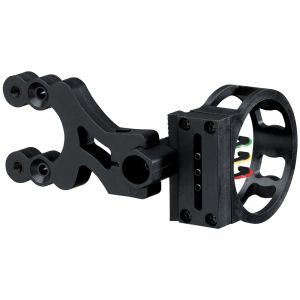 See on Amazon.com | Allen Company Intruder II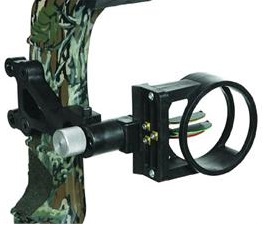 See on Amazon.com | Trophy Ridge Outlaw Horizontal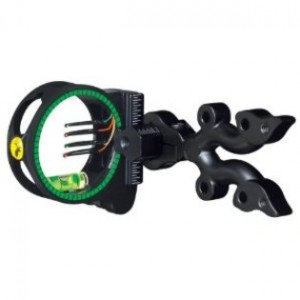 See on Amazon.com | TRUGLO TG75X Versa Peep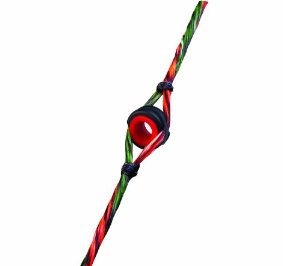 See on Amazon.com | Sure Loc Supreme 550 Target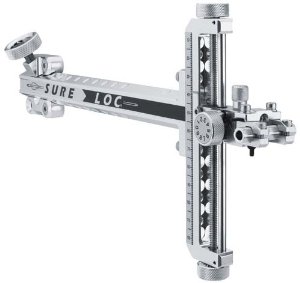 See on Amazon.com |
|
| Type | 3 pin | 3 pin | 4 pin | Peep sight | Target Sight |
| Bow hand | Right / Left | Right | Right / Left | Right / Left | Right / Left |
| Weight | 4.8 oz. | 4 oz. | 7.2 oz. | 5 grams | 8.5 oz. |
| Weather-proof | |||||
| For | Recurve and Compound | Recurve and Compound | Recurve and Compound | Recurve and Compound | Recurve and Compound |
| Skill level | Beginner, Intermediate | Beginner, Intermediate | Beginner, Intermediate | All | Intermediate / Advanced |
You might want to check out one of our four most popular guides:
- Best recurve bows – top 10 chart, divided by price range.
- Beginner recurve bows list.
- Best Recurve bows for hunting list.
- Cheap Recurve Bows list
I hate Sights
No really, I do. If I could, I would never use them. After all, the most awesome and rewarding part of shooting a recurve bow is that feeling of doing something traditional, natural, maybe even hardcore. It’s just you, your “stick and string,” and your target. Unfortunately though, using a sight is necessary in some situations, and when that necessity arises you should know what to choose.
First things first though, and this is something I really need you to understand before you go ahead and purchase anything:
If you are having trouble hitting a target at a short distance, say 10 yards, then the problem almost certainly lies in poor technique on your part. In which case, a sight will not help you at all – in fact, it will make things worse, as you will stop focusing on improving your stance and technique, resulting in even poorer performance down the road. So how do you decide whether this is the case before shelling out the cash for a new sight?
You need to run a test. Ask a friend or at your archery club if you can try out a bow with a sight. Shoot a few arrows from a 10-or-so yard range, then do the same without the sight. Did the sight help you aim better? If not, then it’s most definitely a form / stance issue, and you need to work on that before buying a sight. But what if you don’t have access to a range and no friends who own a bow with a sight? You can simply improvise and scotch-tape a match or a straight stick in place of a simple sight. Now, I’m not saying you should use a matchstick permanently – that wouldn’t be optimal 🙂 This is just a way to find out whether you actually need a sight or not. So, did the sight help you aim better? Great! Now you need to settle on a specific model.
Choosing a Recurve Bow Sight
So you have now decided that you actually do need a sight, and that it won’t hinder you from improving your technique. At this point, you are probably asking yourself two questions:
- What type of sight to buy?
- What specific model should I buy?
I realize this can be very confusing with the hundreds of different options on the market. And so my goal right now is to rid you of that confusion once and for all, and I’m going to do that by describing three basic types of sights available, as well as mention what I believe to be the best models in each of those three categories. After you’re done reading what I have to say, making a decision will be simple. Shall we start?
Type one: The Open Ring
As the name suggest, this is nothing more than… an open ring. The idea behind this type of sight is that you are going to line up your target so that you can see it right in the middle of that ring. This is a very good, cheap, and reliable type of recurve bow sights, though I do have one problem with it.
Basically, I find it to be good for short-range shooting, but not for far-range. When the target is too far, you won’t be able to focus on your target properly through the open ring. To ilustrate what I mean, take your thumb and index fingers and form a small circle (ring) the size of a quarter. Now look extend your arm so that the finger-circle is about the same distance from your face as a ring sight would be when shooting your bow, and look at a target through that circle – first at something close to you (up to 10 yards), and then look at something that is further away (you may want to look out the window if your room isn’t big enough. The problem will be clear. Luckily, there are certain open rings which address this problem, and this is also why I consider them to be the best type of sights in this category:
The AMBO Iris is a German-made Open Ring Sight which, as most German products, it’s extremely sturdy and, in this case, unique. Composed of a few movable iris, you can basically just turn it to narrow down the size of the open ring. This is extremely helpful as it makes it possible to focus your target properly even when the target is so far you can barely see it (well, I’m obviously exagerrating, but you get the point). Here is a video that nicely demonstrates this:
Another excellent open recurve bow sight is the Sight Tunnel made by Werner Beiter which is also (surprise surprise) a German company. The cool thing about this ring is that that it comes with reticles (inserts) in many different colors and shapes, so you can choose one that does not distract you and that doesn’t “blend” with the background as you are taking your shot. Below is a picture of the Sight Tunnel:
Overall, the open ring sights are a good choise for a beginner archer, as they make the aiming process feel very natural and won’t distract you from your main job – hitting your target (and smiling afterwards).
Type two: The Pin Sight
The bad thing about those is that they are kind of hard to find for wooden bows. If you have a metal riser, then you can easily get a pin sight for it. If it’s wooden though, chances are you will have to have holes drilled and inserts put in if you’d like one of those attached. There are two types of pin sights: the “single-pin” and the “multiple-pin” sight. What’s the difference between them?
The single-pin sight is good for shooting at static targets that are a fixed distance from you. The multi-pin sight is better for shooting at moving targets (for example when hunting game with your bow) as it allows you to choose a pin that is ideal for the specific distance a target is away from you at the moment (instructions for calibration are always included along with the sight). On a multi-pin, you will typically want to set one pin for the average distance you shoot from (usually around 25 yards), one pin for longer shots, and one for shorter shots. Having more than 3 pins can often be more annoying than useful in my experience. The next obvious question now is what specific models of recurve pin sights to buy.
To be honest, it doesn’t matter. The pin sight is such a simple and basic construction in nature, that you can’t really go wrong with them. Simply choose one that you can afford and that looks sturdy enough, and you’re golden.
Type three: Target Sights
These are the real deal.
The most advanced and expensive of all the sights around, where the asking price is often in the hundreds of dollars. Most great things cost a lot of money unfortunately, and personally I’d rather just buy a new awesome recurve bow for the money. If you’re really set on buying a Target Sight though, know that they allow for vertical and windage adjustments, and can even be combined with other types of recurve bow sights for ultimate, Robinhood-like accuracy. What’s the drawback though?
Other than the price, it’s the considerable skill required. You must be a really experienced archer to squeeze these babies for what they are worth. Of course, if money is not an issue, then it’s an absolutely awesome thing to buy just for the sheer fun it can deliver. Now, regarding the best Target Sights…
I’d say this would have to be the Sure Loc Supreme 550, which you can buy for $320. Mind you, there are more advanced models than this. However, if you are reading this then you have most likely never bought a Target Sight before, in which case this is the model I’d recommend for it’s relative simplicity and, most importantly for you – light weight. At just over 7 ounces, it will not make your recurve feel too heavy, which isn’t always the case with other Target Sights.
Click here for full pricing, reviews, and pictures of the Sure Lock Supreme 550.

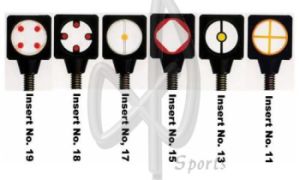
Very good article. I have a Joomong scorpion sight that does the job. $47.00 at the archery shop.
The pin is very fragile and broke off. I repaired it with JB weld. Better than s new. Much more rugged.
The screws have to be tightened after 20 every or 30 shots to make sure it doesn’t drift.
I get a much better grouping with the site. I hit more bullseys without the site. I am not sure what that means. I think it means I need more practice without the site. But also like to keep on improving my groupings with the site.
Thank you for all of the information, this site is great and is a big help.
I personally feel like when you use a sight at short range it helps you to develop your stance and form more than without a sight. Shooting with a sight you focus less on aim and more on what your body is doing and how it is effecting your arrows.It definitely changes your focus and is a very different feel than shooting instinctively but saying that a sight won’t help someone having trouble at 10 yards seems unfair. For me, a sight encourages consistency in shooting, but I understand why you don’t like them. It can feel like a bit of a cheat.
Mark,
I read you’re article on the open ring bow sight and am wondering how this will mount to the bow. I told my wife it should have a bolt with a nut for the front of the bow or does it screw into one of the sight mount holes?
I have a break-down recurve bow I recently purchased. I wasn’t aware, at the time that it is not a good idea to drill into the bow in order to mount a sight. If this is true, then I will have to try and sell the one I have and purchase one that has sight mounting allowed.
Is this, in fact, true? Will drilling into the bow affect it in a negative way?
Great and informative resources. thanks